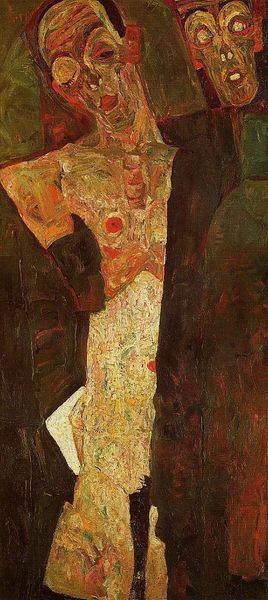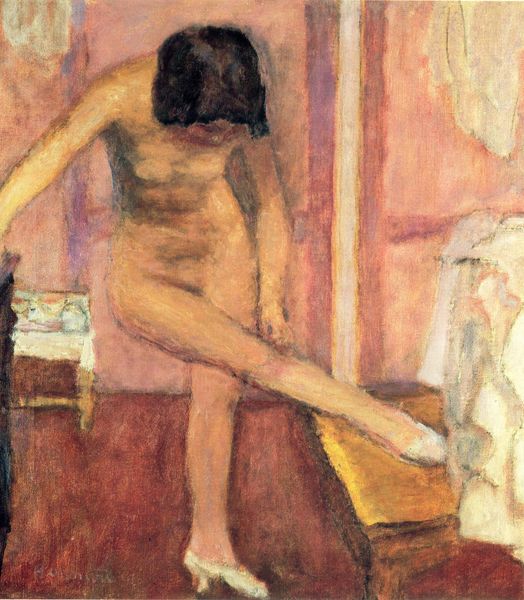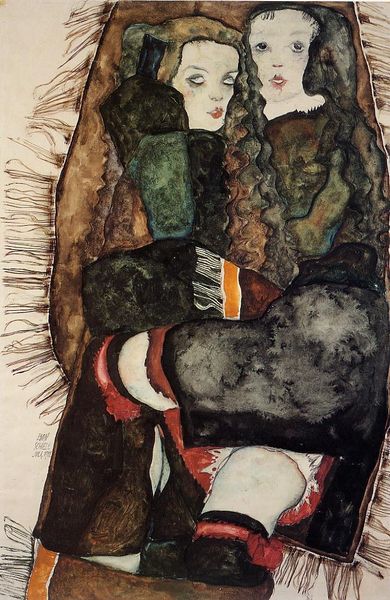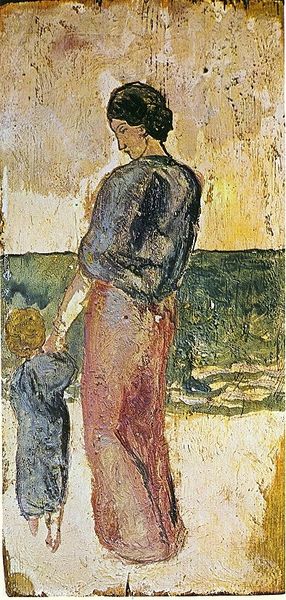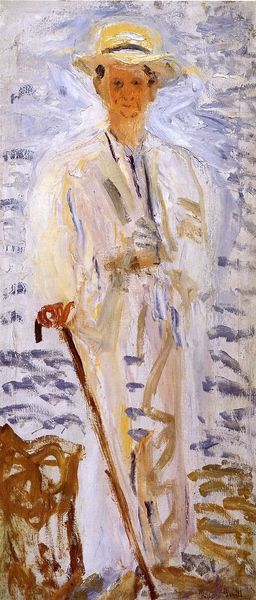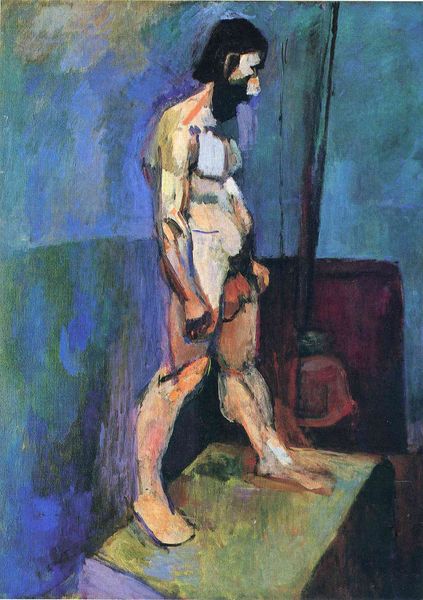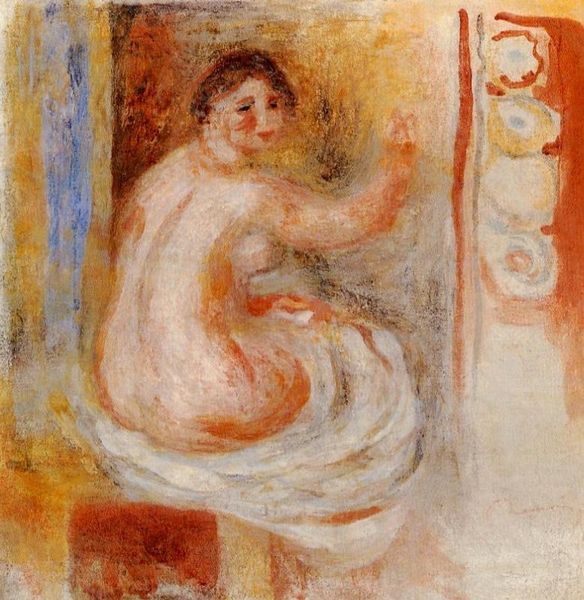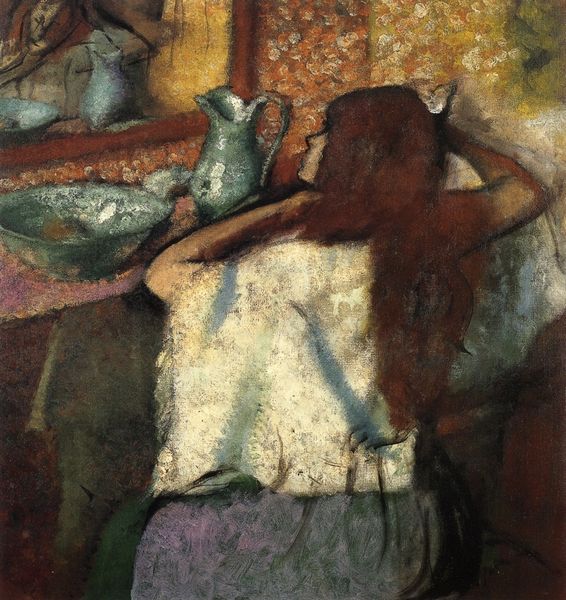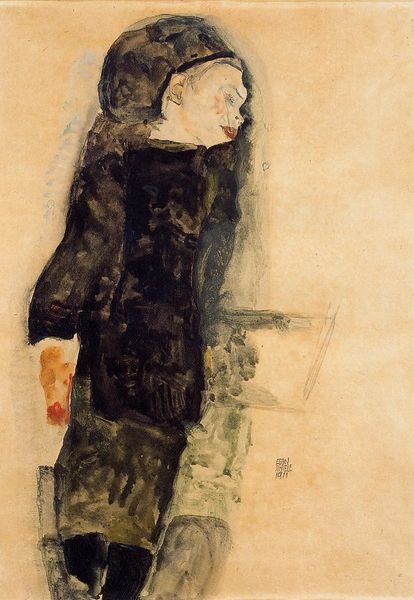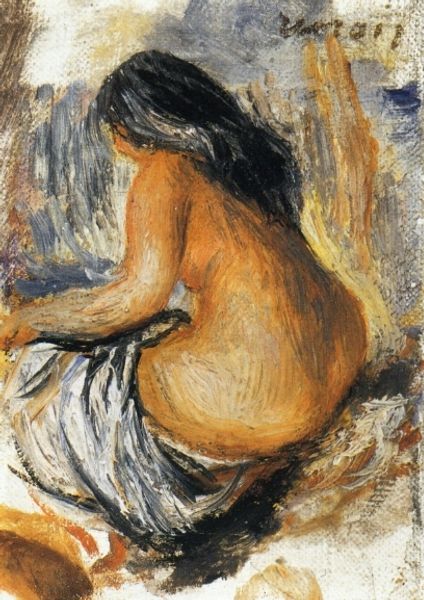
Copyright: Public domain
Curator: Bonnard's "The Grey Nude," painted in 1929, captures a figure in an intimate, almost dreamlike space. Editor: It feels almost like a fleeting memory. The color palette—ochre, faded blues, grays—it mutes the sensual potential of the subject matter, offering a surprisingly vulnerable feeling. Curator: Vulnerable, yes. The painting almost dissolves into abstraction, yet that vulnerability you feel remains tangible. Bonnard worked on this oil painting for decades. The surface is built up from layers upon layers of subtle gradations. Imagine him, continually returning to it, each stroke further blurring the line between figure and setting. Editor: I wonder about that setting. There's something quite radical about how the figure melds into the bathroom, right? Are we meant to think of this daily ritual—drying after bathing—as work? The materials—the tiles, towels—they become essential co-stars. Curator: I see what you mean! The subject of nudes often puts viewers in voyeuristic scenarios but that intimacy we discussed takes the form of blurred edges rather than crisp delineation, which keeps pushing us away, emotionally. The everyday is ennobled by that soft light, making you rethink all the painting materials, too, everything glows together! Editor: The canvas support is a commodity of industrialized artistic practice. And yet here is Bonnard pushing back, using those new materials to represent subjects rooted in centuries of human life! What a lovely little challenge. Curator: It truly makes me want to linger, and think about these contrasts of new against old and the materials within them. Editor: Agreed, and that melding is why "The Grey Nude" doesn't become dated; it invites timeless meditation.
Comments
No comments
Be the first to comment and join the conversation on the ultimate creative platform.
